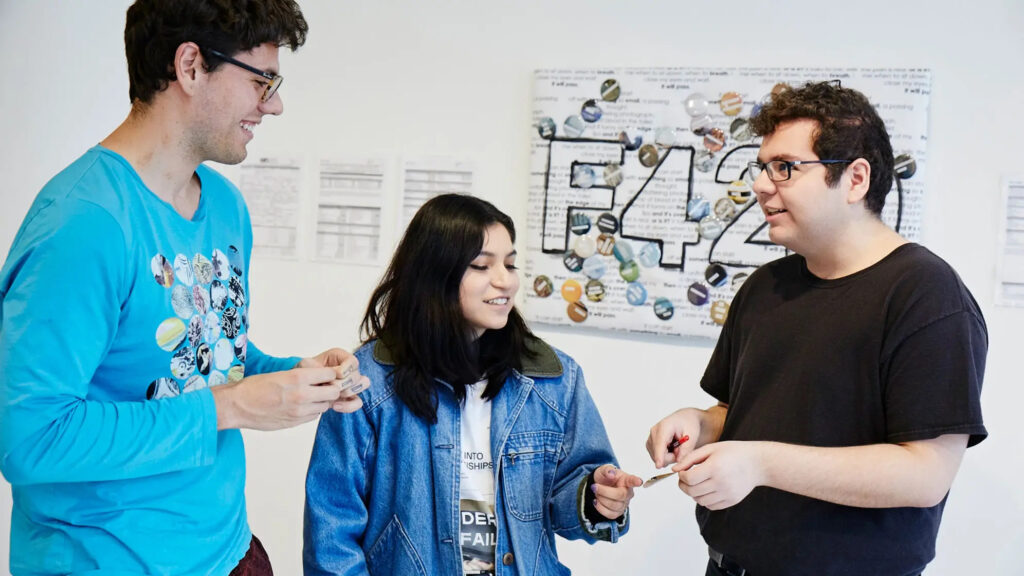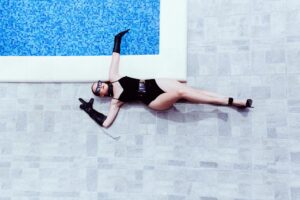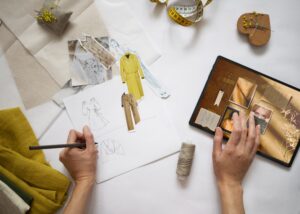As the only museum school in the country, SAIC offers a learning environment where art, design, and scholarship intersect with pressing global issues and cultural perspectives. Play, experimentation, and material innovation are not side notes—they are central to how students learn, make, and lead.
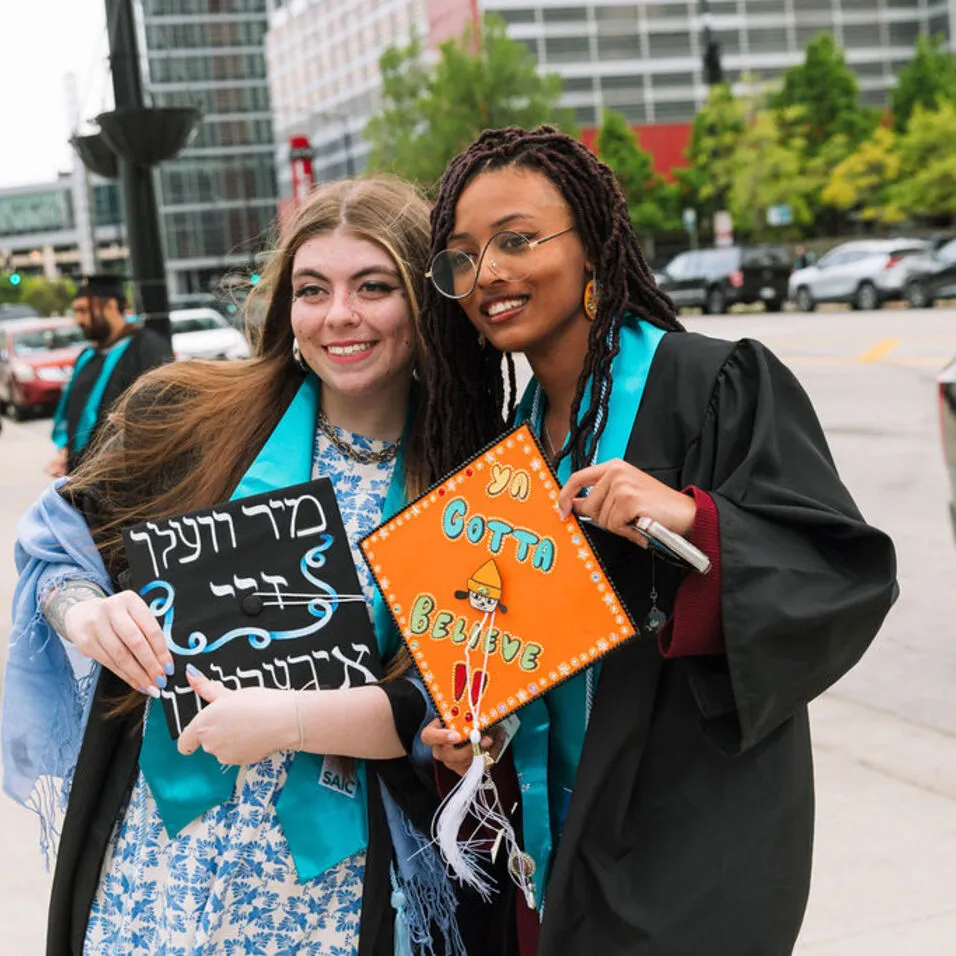
School of the Art Institute of Chicago
SAIC’s interdisciplinary approach encourages students to move fluidly between media, concepts, and methods. This approach prepares emerging artists and designers to navigate—and shape—a rapidly changing creative landscape. Through a curriculum that reimagines the roles of art history, technology, and community engagement, SAIC fosters a new generation of practitioners who question convention and work toward a more inclusive, more relevant art and design world.
The outcome of this educational philosophy is evident in the work of its alumni. Nyugen Smith (MFA 2016) confronts colonialism and its impact on identity. His immersive works span materials and styles, highlighting his Caribbean heritage. Li-Ming Hu (MFA 2019) melds humor, parody, and pop culture in installations that challenge the norms of “art” and “artist.” Eileen Kim (BFA 2017) is a toy designer for McDonald’s. The job taps into skills she learned at SAIC, including collaboration—and play.
Let’s take a closer look at one of the top creative courses at the School of the Art Institute of Chicago.
Fashion Design, BFA
SAIC’s Fashion department offers one of the most intense, interdisciplinary fashion design programs in Chicago, where students emerge as a skilled fashion designer with an awareness of the social, political, and technological forces shaping the 21st century. Within the Fashion program, students will explore the most progressive achievements in the world of dress and fashion through the institute’s Fashion Resource Center, a hands-on collection of late 20th- and 21st-century designer garments representing extreme innovation.
The undergraduate Fashion pathway curriculum consists of a scaffolded sequence of co-taught design and construction courses over the course of the sophomore, junior, and senior levels, providing a firm foundation in drawing, draping, pattern-making, and garment construction. In courses that combine historical research with contemporary explorations, students transcend the traditional boundaries of fashion to examine clothing as it relates to lifestyle, performance, display, costume, and art.
Fashion, Body and Garment Admissions Information, MFA
The Master of Fine Arts in Fashion, Body and Garment provides a creative and intellectual context in which the nature and potentiality of fashion is closely examined and reimagined. Uniquely situated within a vibrant contemporary school of art and design, this program builds on the connections and relationships between art and fashion that have been evolving in the past century and that reach an unprecedented level in contemporary practices today. Through a combination of dedicated design studios, topical seminars, self-directed research, technical labs, design history, theory courses, and a wide range of elective options such as performance, film, new media, writing, and sculpture, students explore a breadth of possibilities, yet achieve an in-depth focus within their individual practice.
Fiber and Material Studies, BFA
The Department of Fiber and Material Studies provides students with an interdisciplinary study of fiber, materials, and processes that incorporate different art-making approaches, including: textile construction, sculpture, installation, action, and craft. Research-based, concept-driven, and resolutely engaged with hands-on making, the program educates students to make ambitious, complex, and innovative contemporary art.
BFA students considering a concentration in Fiber and Material Studies, are encouraged to enrol in beginning-level classes such as Introduction to Fiber and Material Studies, Drawn to Print, Woven Structure Basics, Paper-making I, To Dye For, and Stitch I. From there, faculty will help them determine the selection of upper-level courses best suited to their practice and interests. Those classes include Os + 1s Jacquard Weaving, Print Into Sculpture: 3D Screens, The Unpainted Picture, Time, Material, and the Everyday, Micro-Macro: Artist Research, and advanced weaving, print, dye, and paper-making classes.
Students and their peers will develop 2D and 3D work through concerns of hands-on making, concept and content articulated on the surface, in the structure, and through mixed media (crossover disciplines). Alumnus Bryana Bibbs is the founder of The We Were Never Alone Project, a series of weaving workshops for survivors of domestic violence. During the workshop, Bibbs teaches participants a basic plain weave and gives them space to share their stories. She sees these workshops as part of a tradition of community spaces that have been centered around knitting.
Film, Video, New Media, and Animation, BFA
The Film, Video, New Media, and Animation department encourages experimentation with radical form and content. Their commitment to deep interdisciplinarity crosses a broad spectrum, including: cinema, animation, time-based installation, and new media. Students have access to state-of-the-art filming, editing, and production equipment plus a large list of courses to address their individual artistic needs.
The department reaches beyond conventional approaches of moving image media and animation programs. Students concentrating their studies at SAIC investigate the possibilities of: Nonfiction-documentary and narrative film and video; Moving-image installation; Hand-drawn and digital 2D and 3D animation; Interactive art, VR, AR, and web-based projects; and Media art histories. Students invent interdisciplinary pathways to produce hybrid works that expand traditional forms to create acts of artistic exploration that the department supports.
The work of faculty is represented in museums and galleries; presented at major international festivals of film and media; screened in art cinemas and at music and performance venues; embraced in community-based projects; and featured in arts publications. Students take classes offered by these working practitioners and it is through this process that they learn to research, invent, and explore. The seminars, production classes and art history ensure that students receive in-depth knowledge relevant to moving-image art making.
Studio courses follow disciplinary paths of cinema, video art, new media art, and animation—experimental 3D and 2D. These classes provide rigorous technical training through sequences in each path that advance practical and critical skills, connecting your work to wider interdisciplinary concerns. Courses engage historical, critical, aesthetic, cultural, and technological issues by making experimental media art. The program is consistently ranked among the top five graduate Film/Animation Schools in the nation by U.S. News and World Report.
Writing, BFA
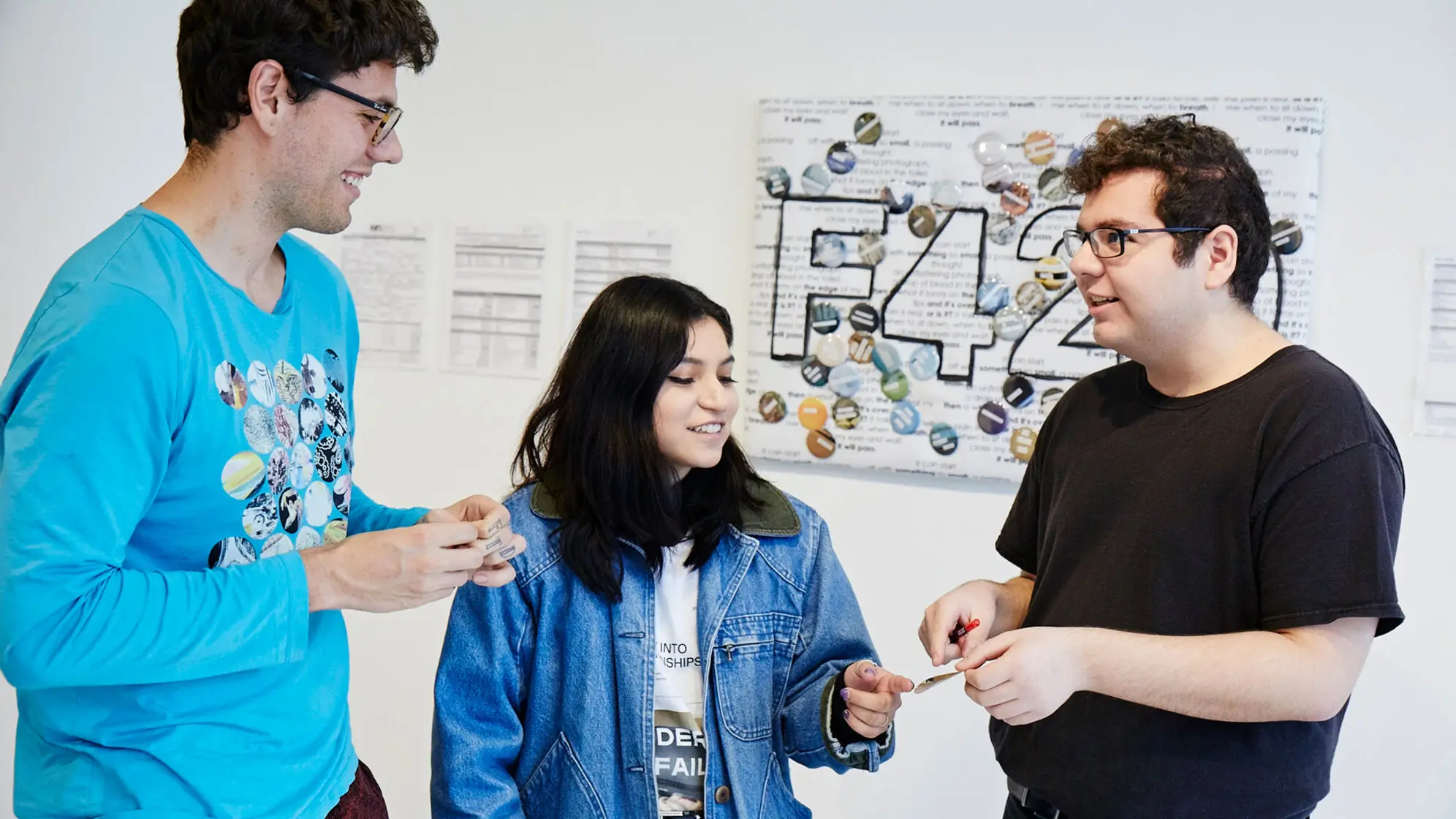
School of the Art Institute of Chicago
The Bachelor of Fine Arts in Writing degree emphasizes a process-based approach to creative writing—one in which students experience writing across genre and in interdisciplinary and hybrid modes. Integrated into SAIC’s studio departments, students explore the relationship between language and visual art by connecting writing to comics, graphic novels, artist’s books, painting, performance, film, sound, and gallery installations.
Students participate in either or both the BFA thesis exhibition and the BFA in Writing reading. They gain understanding of editorial and production work through involvement in Mouth, the annual BFAW student-run literary journal, or Fnewsmagazine, the institute’s award-winning student newspaper. Students are also encouraged to attend the workshops by the Writing Department sponsored Visiting Writer and Artist Lectures, special events such as Publishing Panel presentations, and MFAW Graduate Lectures.
Historic Preservation, MSc
The Master of Science in Historic Preservation program at the School of the Art Institute of Chicago is a two-year, graduate curriculum that prepares students for careers in revitalising our built environment. Courses are offered in four areas: Architectural design; Physical conservation; Architectural and social history; and Preservation planning. Each graduate student completes two years of coursework in each of these areas as part of the required curriculum.
The 60 credit-hour Historic Preservation program requires students to undertake an internship. The 210-hour internship with a preservation agency, conservator, restoration architect, or designer enables students to work on historically significant sites and to learn firsthand the latest preservation techniques. SAIC’s Historic Preservation program has extensive international contacts and offers students significant overseas study opportunities. The program’s balanced curriculum and emphasis on real-world experience prepare students for professional opportunities.
Architecture Degree with a Track in Interior Architecture, MFA
SAIC offers two Master of Architecture programs with a Track in Interior Architecture. Both are professional degrees accredited by the National Architectural Accrediting Board. Unique among architecture graduate degrees, SAIC’s MArch with a track in interior architecture options recognize and underscore the significance of architectural design where form, structure and enclosure are considered in proximity to materials, objects, human needs, and experience. Housed within an interdisciplinary educational community, the degrees provide an intellectually stimulating context for exploring the social, cultural, and technological implications of architectural spaces designed from the inside out.
Interior Architecture is a growing professional field where architects have an increasing impact. In the MArch programs, we teach through hands-on inquiry, experimentation and exploration to develop the skills and critical knowledge necessary for the development of new spatial ideas and invention in the field of interior architecture. The curriculum is centered on the series of project-based studios supported by courses in building structures, building technology, professional practice, and electives in architectural history and theory.
MArch students are encouraged to develop and expand their practice by taking courses in other departments across SAIC, as well as by applying to AIADO’s External Partnership courses. In their final year, students complete a rigorous comprehensive design studio and pursue a self-directed design thesis under the supervision of faculty in the department.
Comics, MFA
SAIC’s Master of Fine Arts in Studio Comics program offers an interdisciplinary, innovative pathway for aspiring comic artists. Recognizing that developing narrative comics is a multi-faceted art, the curriculum provides students with the opportunity to work across painting, drawing, writing, reading, and narrative expression. Foundational Comics Seminars, combined with student-selected studio electives and faculty advisors, allow students to experiment while developing their narrative voices and visual languages.
As part of SAIC’s MFA in Studio curriculum, students will complete 60 credits hours taking courses of their choosing across studio, design, and academic departments; participate in graduate critiques that alternate between discipline-specific panels in the fall semester and interdisciplinary panels in the spring semester; and present their work to their peers and to the public through the Graduate Thesis Exhibition.
Students in the Comics program have access to world-class facilities and resources. These include a comics classroom equipped with drafting tables and digital scanner; screen printing stations; a bookbinding studio; display cases for exhibiting artwork; and much more. A wealth of other campus-wide resources such as gallery spaces, libraries, and other special collections makes SAIC an ideal place to pursue a comics education. The Comics program’s faculty is made up of professionals in their fields, including renowned comic artists, authors, and graphic designers.
Jasmeen Dugal is Associate Editor at FashionABC, contributing her insights on fashion, technology, and sustainability. She brings with herself more than two decades of editorial experience, working for national newspapers and luxury magazines in India.
Jasmeen Dugal has worked with exchange4media as a senior writer contributing articles on the country’s advertising and marketing movements, and then with Condenast India as Net Editor where she helmed Vogue India’s official website in terms of design, layout and daily content. Besides this, she is also an entrepreneur running her own luxury portal, Explosivefashion, which highlights the latest in luxury fashion and hospitality.


